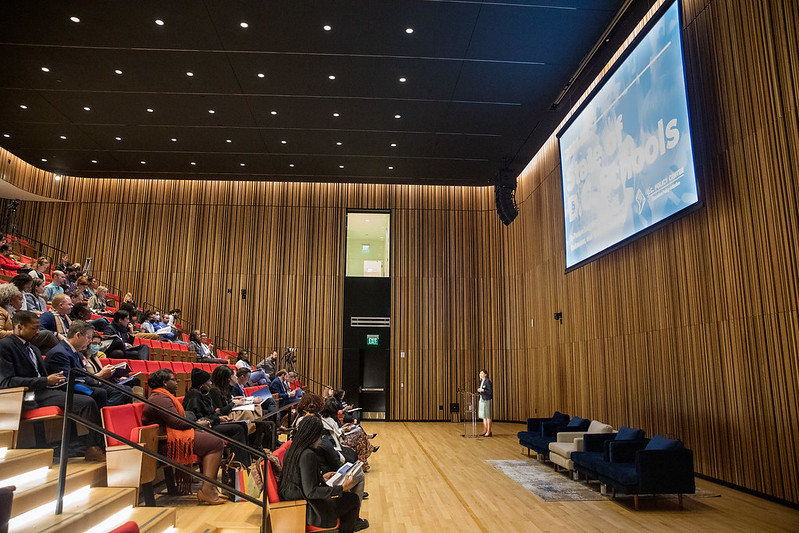

State of D.C. Schools is an annual systemwide overview of public education in the District of Columbia. For this year’s report release, the D.C. Policy Center hosted an in-person report release to discuss the main findings and gather a panel of education stakeholders to talk about their experiences during school year 2021-22. This D.C. Voices highlights some of the conversations from that release event.
In school year 2021-22, all students returned to in-person learning for the first time in almost two years after the COVID-19 pandemic began in spring 2020. The D.C. Policy Center’s State of D.C. Schools, 2021-22 report examines the transition back to in-person learning, measuring outcomes for the first time since the start of the pandemic, and beginning work on recovery.
The release of this year’s report included a discussion of the findings and reflections from different education stakeholders. First, PAVE Parent Leader and ANC commissioner Tara Brown framed the report and its utility as a tool for advocates and policymakers. DC State Board of Education (DC SBOE) President and Ward 7 representative Eboni-Rose Thompson moderated a panel discussion featuring Dr. Christina Grant, State Superintendent of Education, Office of the State Superintendent of Education (OSSE); Dr. Chunita Pilgrim, Principal, Burrville Elementary School; Rachel Tommelleo, Principal, Center City PCS – Brightwood Campus; and China Jones-Burgess, DC SBOE student representative.


Moderator Eboni-Rose Thompson prompted reflection on lessons from the previous year and then transitioned to how schools are implementing innovative practices moving forward. Below is a summary of the discussion. A recording of the full discussion is available here.
Tara Brown, PAVE Parent Leader and ANC Commissioner Ward 8
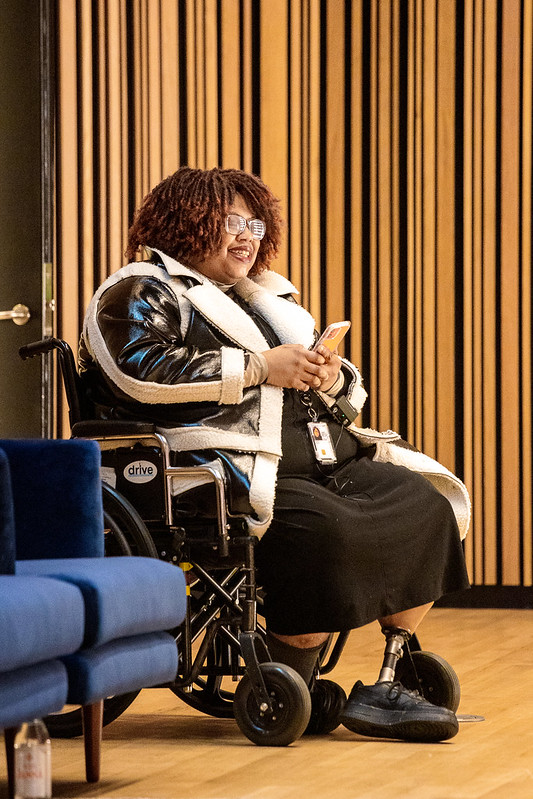

“This report is so much more than numbers. These numbers are stories that tell the lived experiences of our children and families. These findings corroborate the realities of the hardships caused by COVID. They ground us in the conversation about school recovery and highlight areas where school recovery is most needed.”
Tara Brown’s opening remarks emphasized the utility of the State of D.C. Schools report as a tool for advocates and policymakers. Instead of looking at the report as a collection of data, Brown emphasized that the data weave together to create a collective narrative of the experiences of last year that will be hard for policymakers to ignore. She mentioned that the report highlights the experiences that communities experienced during COVID-19 and sheds light on disparities, that were not introduced during the pandemic but that have been amplified.
Additionally, Brown said that the State of D.C. Schools report serves to amplify the voices of students and families throughout. Brown closed by emphasizing that the report describes issues in a way that can be more impactful than a single testimony and that its findings “ground us in the conversation about school recovery and highlight areas where school recovery is most needed.”
Dr. Chunita Pilgrim, Principal, Burrville Elementary School
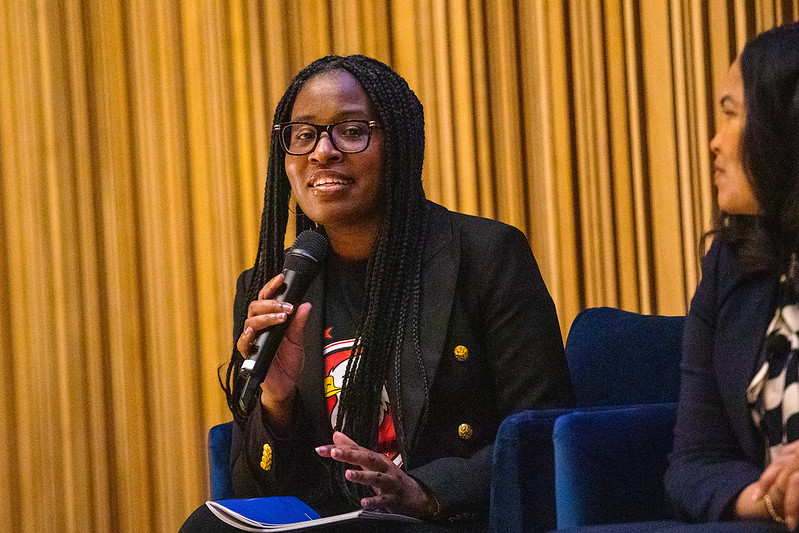

On the return to in-person learning:
“I think being transparent and open really garnered the trust that my parents needed to have their students return back to school.”
Bringing 100 percent of students, besides a small number with medical exemptions, back to in-person learning after only 21 percent of students were in-person for any amount of time the previous year was a huge lift and required a large investment to make students and families feel safe. Dr. Chunita Pilgrim emphasized that rebuilding trust was a huge component of getting students and families back to school.
She was very open with families about how reopening would require open communication between her and her community to learn more about families’ fears and frustrations. Pilgrim also hosted virtual and in-person tours of the school building prior to the return to in-person learning as a strategy to rebuild trust and give families transparency about the school experience. Families could see how social distancing, PPE, and other COVID-19 mitigation strategies were put into place to show how the school was prioritizing student safety and wellness.
Looking forward to this school year, Pilgrim continues to be responsive to the needs of her school community. In response to demands from many families who have not received COVID-19 vaccines, Burrville Elementary continues to operate weekly COVID-19 testing as a mitigation strategy to keep children and staff safe.
On addressing attendance:
“It takes all of us. It’s not one person. One person can’t do this alone. It takes all of us. So, it’s listening, hearing, speaking, thinking, talking about, and finding resources so we can remove barriers so kids know we want them in this place.”
As students and families navigated how to reengage with schools, attendance was an issue. Districtwide, 48 percent of students missed 10 percent or more of all school days.
Pilgrim has approached rebuilding attendance by building relationships with families and breaking down barriers to attendance. First, she is in front of the school building every morning during drop off to build and reinforce relationships with families of her students—“I do that because I want them to know that I know their students’ name […] and that they matter to me.” Teachers at Pilgrim’s school are also targeting certain students and emphasizing that they want to see students at school every day.
Additionally, Pilgrim also highlights and celebrates students who have perfect attendance as well as those who have improved attendance. The school offers incentives like extra lunch periods or pizza parties.
Pilgrim and her team have also identified several barriers that might prevent students from attending, such as having a uniform clean and ready. Pilgrim emphasizes to her students that it’s most important for them to be in the building and that the school will provide what the students need for that to happen. Pilgrim used Elementary and Secondary School Emergency Relief (ESSER) funds to restock supply closets and purchase additional uniforms.
Rachel Tommelleo, Principal, Center City PCS – Brightwood Campus
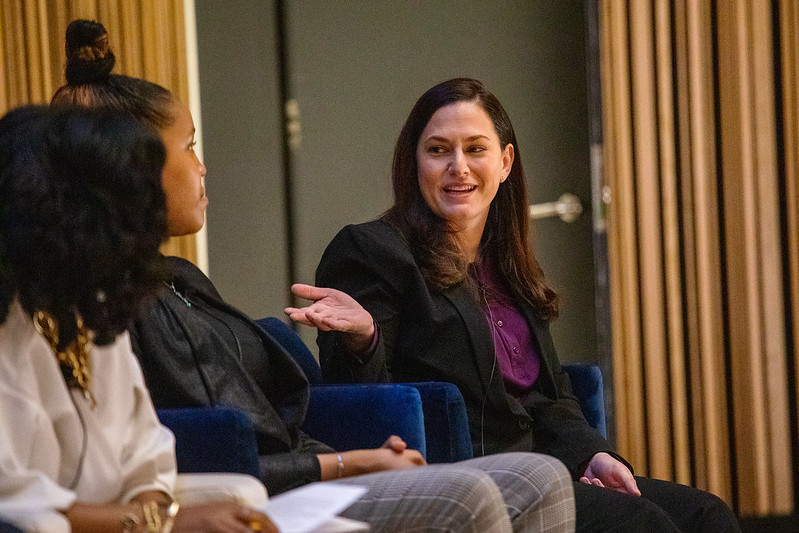

On responding to changing COVID-19 protocols:
“We had to make sure that communication with our families and our staff was clear and consistent so that they felt safe because there’s nothing more important than making sure our staff and our students feel safe to come into the building every day.”
COVID-19 continued to impact school year 2021-22. As the risk posed by the pandemic changed throughout the year, policies also shifted and with it the responsibilities that school leaders needed to navigate. Rachel Tommelleo noted that “the whole year was a shift.”
Prior to the start of the school year, Tommelleo took time with her team to identify areas that her staff would need to prioritize throughout the year. Ensuring strong communication with families and staff emerged as a top priority. Tommelleo worked to ensure that communication was strong through every possible outlet including emails, phone calls, posts on social media.
Tommelleo also built in more time in her schedule to allow for more last minute flexibility: “We left space for the reactive pieces that we needed to deal with,” which allowed for a lot of last minute support. This year has meant getting back to some pre-pandemic norms when it comes to scheduling, but Tommelleo is still leaving space for flexibility, especially to respond to students’ increased needs for social-emotional support.
On supporting teachers and mitigating burnout:
“There’s nothing greater than having students that went to your school who are in your community coming back to serve their community, and it really has me thinking deeply about what types of pipelines could we be creating for our students.”
In addition to higher teacher vacancy rates, school leaders also had to navigate filling absences when teachers were out with a Districtwide substitute teacher shortage. Tommelleo described different ways that her school is navigating to address shortages and mitigate teacher burnout.
Center City PCS – Brightwood used ESSER funding to fund a building-wide substitute position. This “building sub” floats to different spaces throughout the school to provide coverage when there are vacancies or absences. Because the building sub is there every day, she’s built relationships with all students, can continue supporting them academically while also being knowledgeable about the school culture.
Additionally, Tommelleo emphasized that listening to her staff is an important way to build trust and lessen burnout. Her school is working closely with CityBridge Education and their Transforming Teaching Initiative to “make sure our teachers have a voice and that there’s a level of professional trust that makes them want to show up to work.” Her school is also working with Teacher-Powered Schools and engaging a group of teachers for regular discussions on how teaching looks like now coming back from virtual learning.
Finally, this year Tommelleo has hired two former Center City PCS students, which has encouraged her to think about other ways to engage with alumni to encourage them to return to their school communities and step into roles as educators.
Dr. Christina Grant, State Superintendent of Education, OSSE
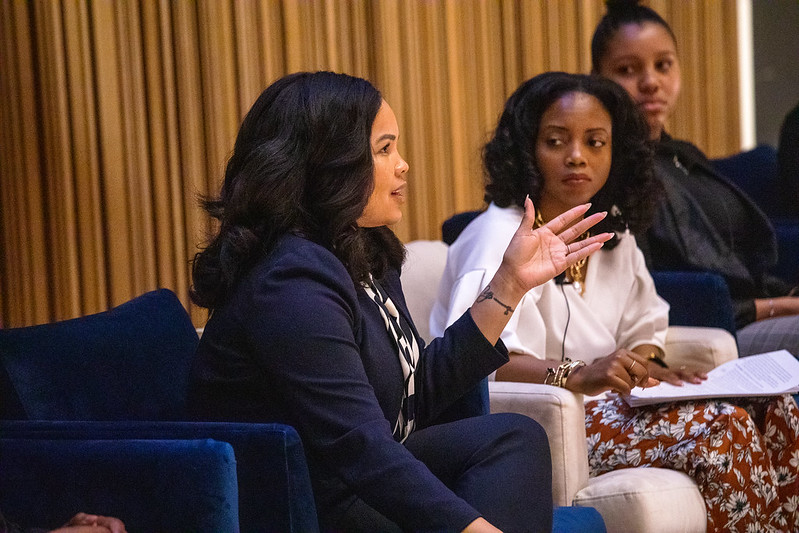

On spending federal ESSER funds:
“If the pandemic taught us nothing else, it’s taught us that school is not just where we send our kids. School is the center of our universe and it shapes the future of our district.”
Schools in D.C. have received over 500 million dollars in federal ESSER funds, 23 percent of which was spent as of fall 2021. These funds provided for new programs to address learning acceleration and to allow for more innovation. Safe reopening has moved beyond identifying COVID cases and strategies to keep children safe but has shifted to also include conversations around school climate, mental health, social well-being and ensuring that those supports keep children safe in their learning environment.
Dr. Grant also described how D.C. focused on accelerating learning, with state assessment data providing the goals and ideas of the work that needs to be done to support students. For example, high-impact tutoring is one new innovation that did not exist prior to the pandemic. OSSE aims to serve at least 10 percent of D.C.’s student population through this learning acceleration strategy. Innovations to support accelerating learning remain a top priority for Grant.
Grant identified three main areas that OSSE continues to prioritize: mental health and support for our students, giving teachers what we know they need and deserve, and thinking more about what role schools serve, beyond just learning.
Finally, OSSE has invested in an interactive recovery dashboard that tracks and reports federal ESSER spending. Rather than just thinking about LEAs and their compliance with federal regulations and reporting, it serves as a resource for all stakeholders to know where resources are going.
On addressing academic performance and accelerating learning:
“You’re going to continue to see [OSSE] support schools making deeper investments and instruction in both literacy and math.”
A year of virtual learning had significant impacts on student academic performance as measured by the decline in PARCC scores. Grant addressed how OSSE is supporting academic recovery and learning acceleration for all students. First, OSSE set up guidance around virtual learning so schools would know what to expect about when shifts to virtual learning could happen.
Additionally, OSSE is also working to ensure that schools have the guidance and flexibility to dictate how they spend their ESSER funding to most align with student needs in a timely way. In the larger conversation of spending ESSER funding, Grant emphasizes that OSSE spends most of its time in conversation with schools and listening and responding to their needs.
The spending plans created prior to the return to in-person learning may need to be shifted to reflect the needs that schools are identifying now. For example, rather than spending a lot of focus setting up COVID-19 testing programs, Grant is now hearing from schools that are interested in learning more about virtual learning, teacher scheduling and flexibility, career laddering for teachers, and supporting workforce development programs for alumni, among others.
OSSE is continuing to support investments in literacy and math. They set up math boot camps for the upcoming summer, released a summer acceleration grant earlier than in the past year in response to feedback from schools, and generally being responsive to schools’ requests for resources that they need or initiatives that they think would be helpful for students. OSSE is also engaged in a literacy task force across the District to provide guidance on literacy instruction and training for teachers.
China Jones-Burgess, Student Representative, DC SBOE
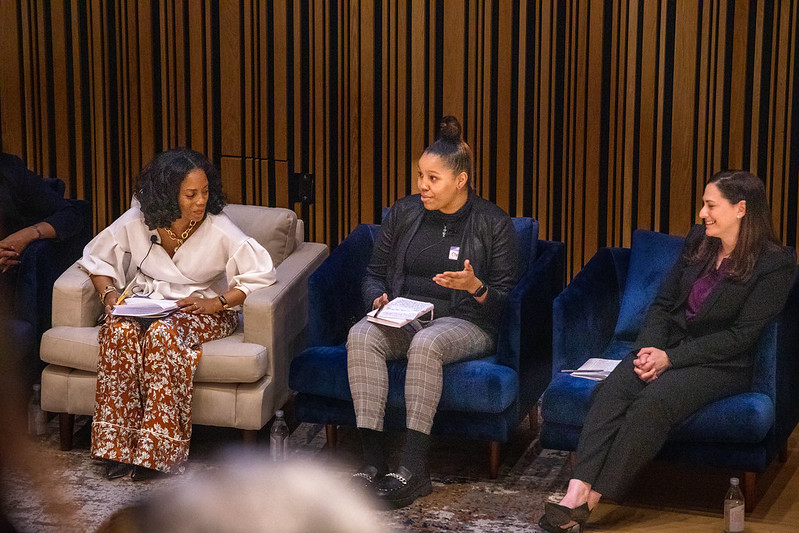

On mental health supports for students:
“Schools should offer support for all of their students, with open arms, even if it may be difficult for them.”
The Student Advisory Committee of the DC SBOE has talked a lot about mental health challenges and the need for support. China Jones-Burgess spoke on what she thought the school system should be doing to support students like herself when navigating mental health challenges.
For many students, trust is a big concern when deciding whether to be open about reaching out for help. Despite these problems, there is no reason to give up on your students, Jones-Burgess emphasized, schools should keep pushing them to seek out help. She advocated for several strategies such as putting up more informational posters, having mental health practitioners coming into classrooms to talk about mental health, and having multiple paths to finding help depending on who students trust most.
It can be difficult to many students to ask for help–this should be acknowledged on a daily basis just to remind students that “you’re there for them.” Building trust is important because, Jones-Burgess explained, students will feel safer talking to trusted adults and then schools could better understand the different external factors that are affecting students engagement in school.
On the importance of community safety:
“I think if we don’t work together as a community to find a way to end the terrible violence, there won’t be no end to the danger and trauma that we’re putting everybody through and that’s not going to help us in the long run, it’ll just make things worse.”
Feelings of safety and community violence were identified as priority issues for the Student Advisory Committee of the DC SBOE. For Jones-Burgess, issues of community safety are so important because everyone deserves to feel safe in their community. Further, she explained that many of her peers express that after graduation they plan to leave D.C., and that students shouldn’t have to feel like they must leave to be safe.
Jones-Burgess wishes that she could see a change in community leadership with more adults and youth speaking up and engaging in the political process through a variety of means like writing a letter, sending an email, or talking with the press.
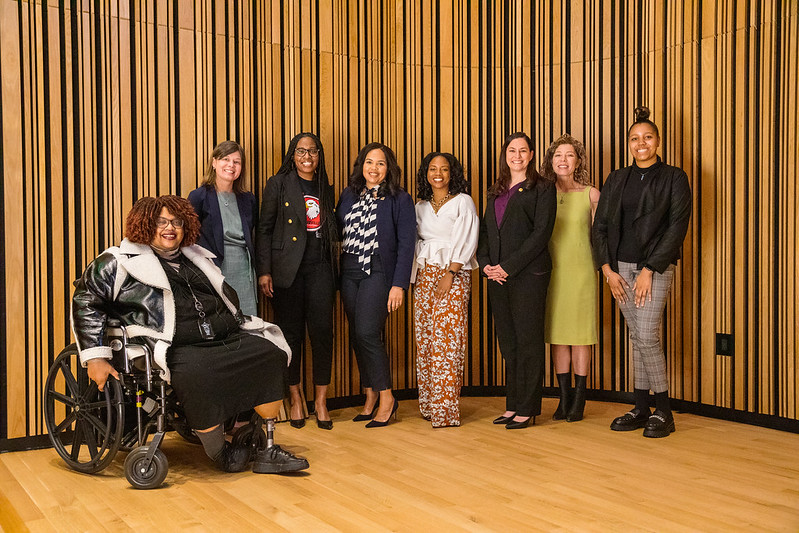

The D.C. Policy Center would like to thank our participants for their reflections and continued work across public schools in D.C. Click here to access the full report, report summaries in English and Spanish, and a recording of the panel discussion.
